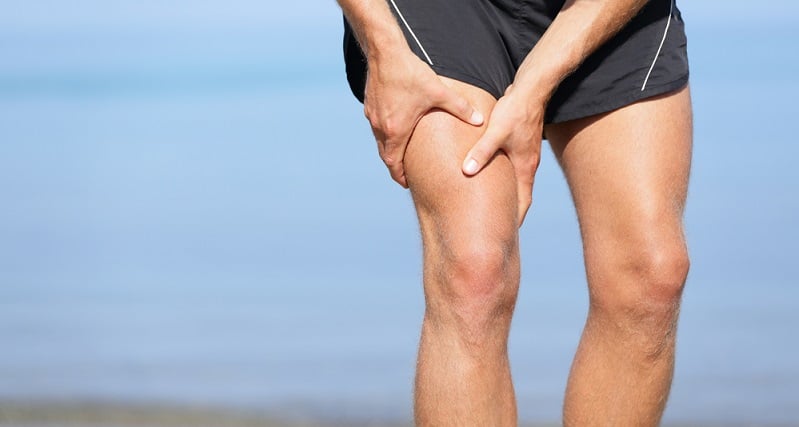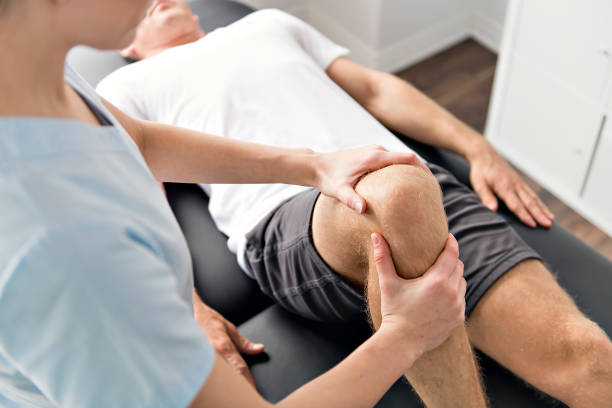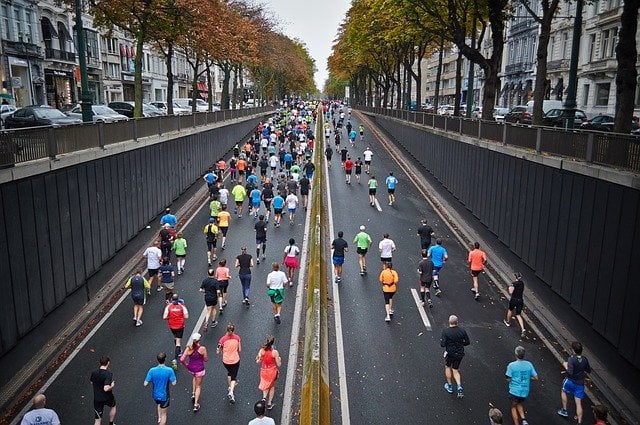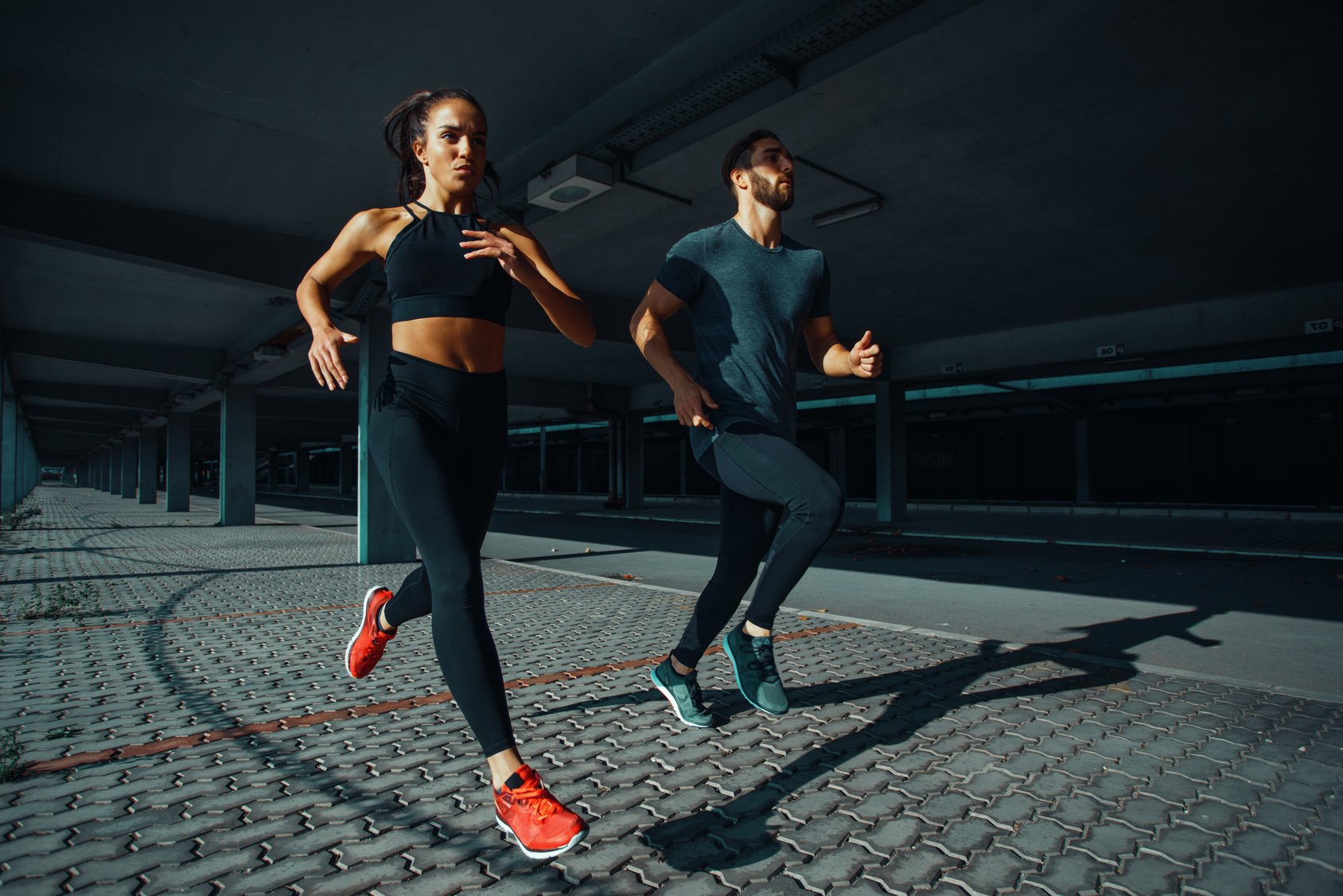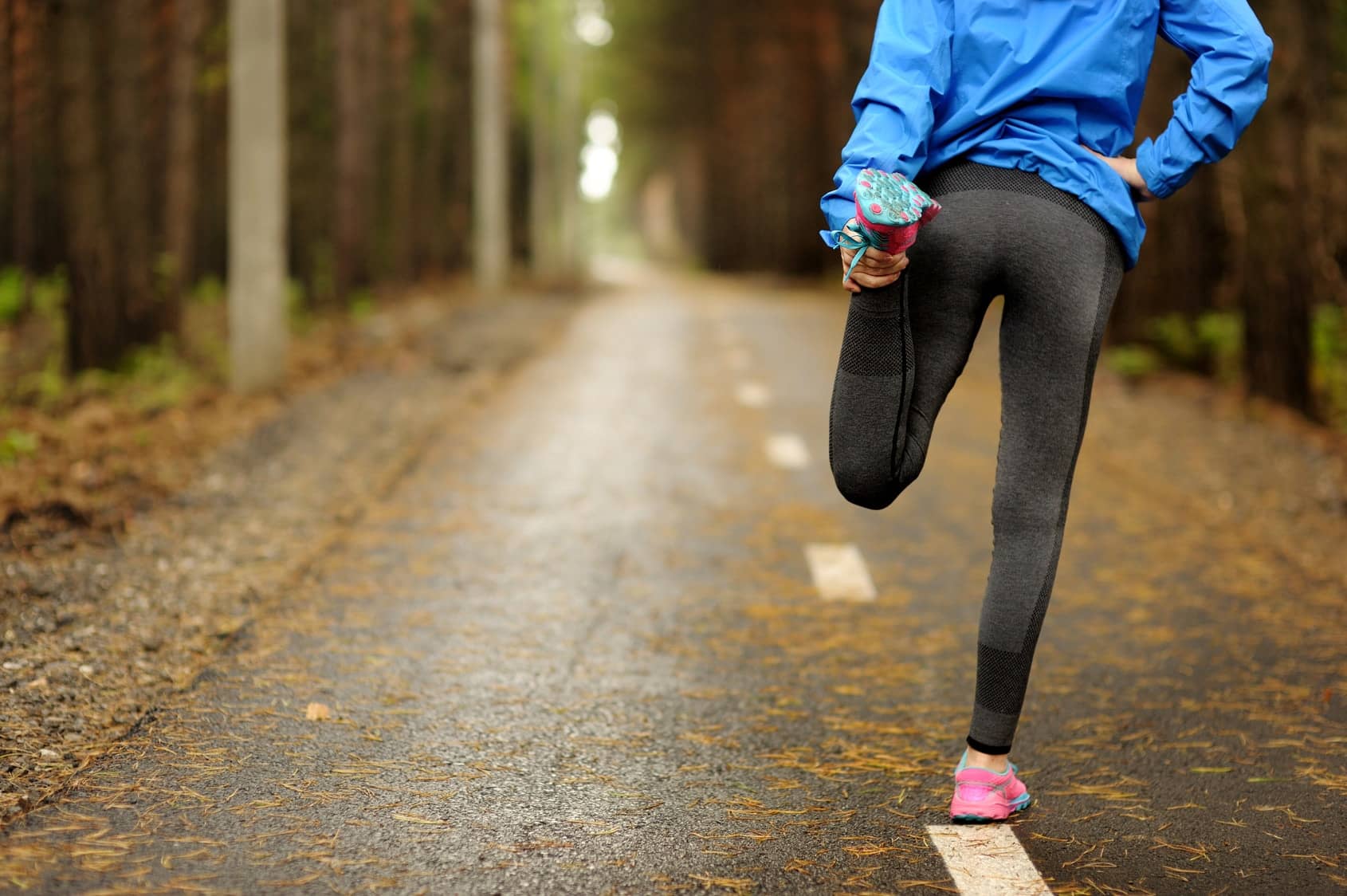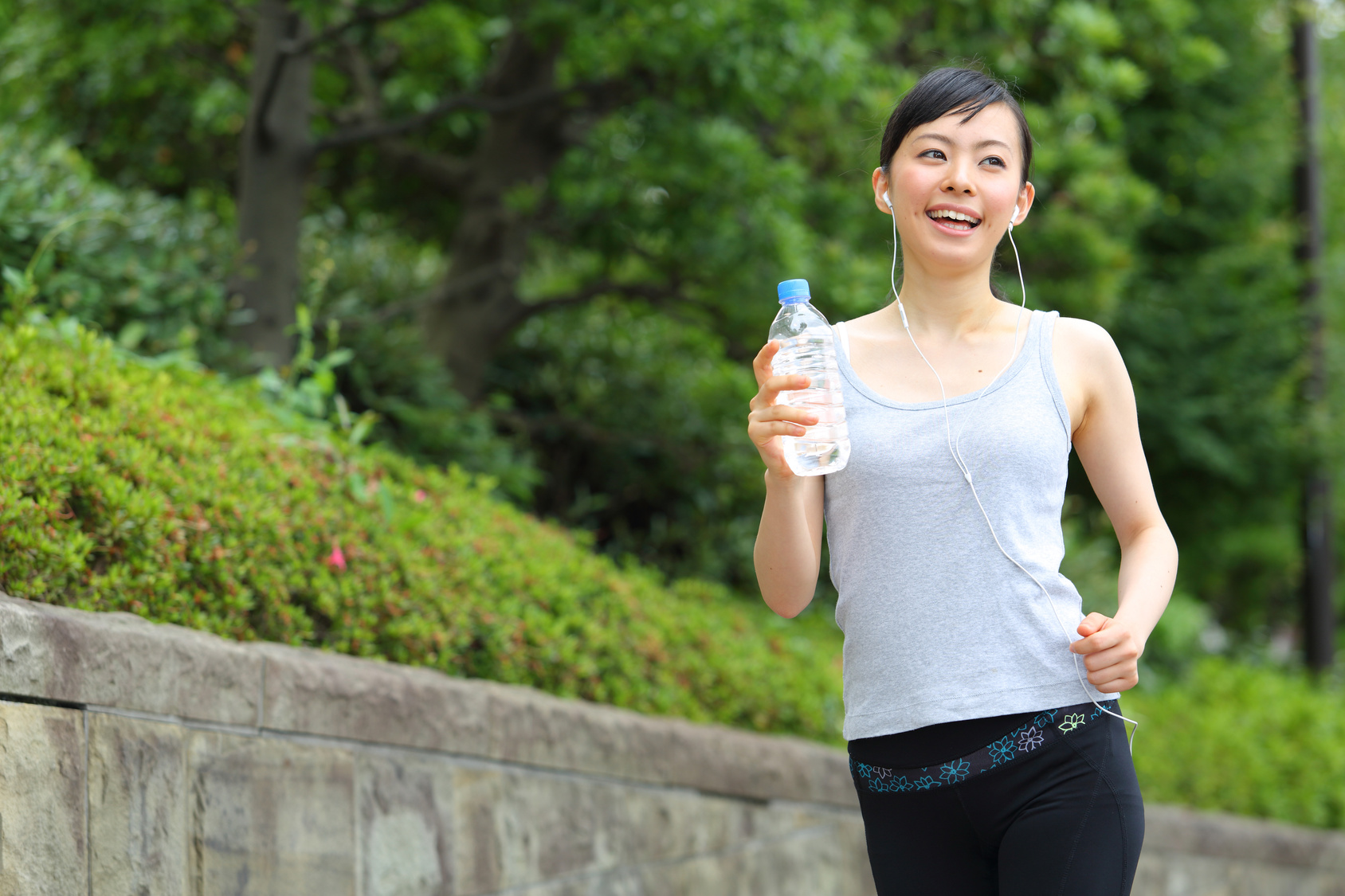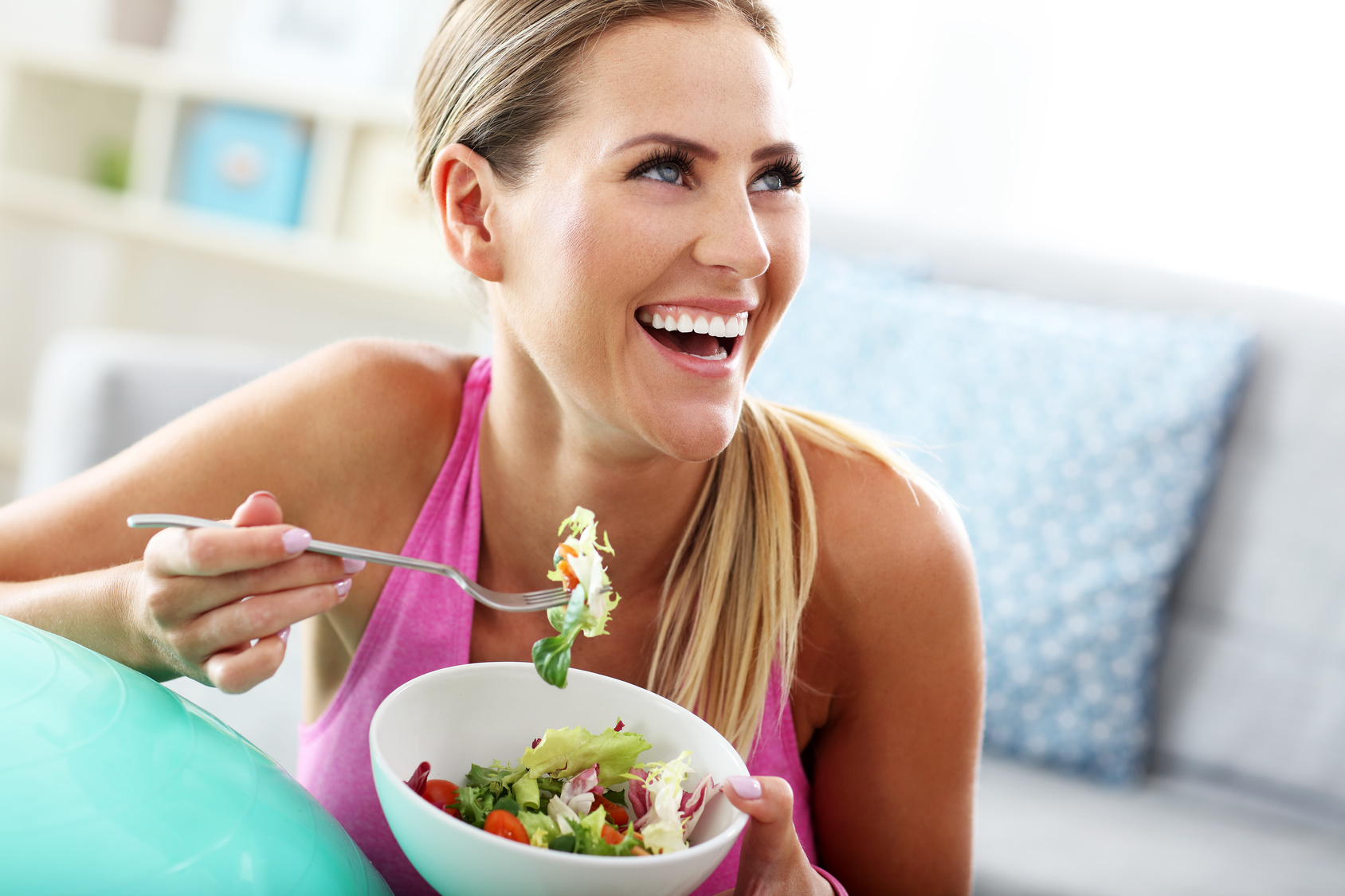Do you often get sore quads from running? Then you have come to the right place.
Quad soreness is a common problem among runners—beginners and elites alike. In most cases, the pain is just annoying, but sometimes it can even sideline the most committed for days, or weeks, at a time.
In this post, I’ll dive into the causes of quad soreness and then share a few measures and tips that you can try to fix sore quads and return to running strong and pain-free.
If your quads are sore more than often, taking a few measures can help you return to running strong and pain-free.
But first, let’s cover the basics.
What Are The Quad Muscles?
The quads, or quadriceps, refer to the four muscles located in the front upper thigh between the pelvis and knee.
The four muscles include:
- The rectus femoris—which runs down the center of your thigh from the hip to the kneecap
- Vastus lateralis—which is located on the outer side of the front of the thigh
- Vastus medialis—which runs along the inner section of the front of the thigh
- Vastus intermedius—which extends down the center of the thigh
Although the quads are made of these four different muscles, most people think of them as one simple muscle and system.
Your quad muscles work “hand in hand” with your hamstrings to extend and bend your legs and perform other vital functions. That’s why the quads are some of the most important running muscles and are vital for all types of athletic endeavors.
For this reason, the quads are some of the most important running muscles and a key driver in virtually all athletic sports. This, as you can already tell, also means they’re susceptible to overuse or injury, which might the reason you’re experiencing quad soreness after running at times.
The price we pay.
Causes Of Quad Soreness In runners & What To Do About it
Training mistakes are the main reason behind most running injuries—quad soreness is no exception.
Muscle soreness is your body’s way of telling you that you’ve been gone a little beyond its comfort zone.
This happens when you put a lot of stress on the cells that make up your quads that aren’t quite used to the intensity of the exercise, which happens when you try to run further or faster than you’re used to.
Fortunately, over time, your quads will be more robust. But the keyword is time, and when you’re trying to rush things out and skip stages, you start getting too hurt.
Why Do my Quads Hurt After Running?
In most cases, some quad soreness is no cause for alarm. For example, if you changed up your training load recently, your quadriceps might experience delayed onset soreness (DOMS).
This condition is believed to be mainly caused by discomfort linked with micro-tears in the muscles during training.
This is thought to be a residual effect of the build-up of lactic acid in the muscle from intense training.
But dealing with chronic quad pain likely means a more severe injury.
Additional resource – Labral tears in runners
Drastic Increase in Volume
As previously stated, the main culprit behind quad soreness is overuse.
So it should be no surprise to experience soreness when you try increasing your overall training load—either by logging more miles or doing more speedwork. Both impact the workload of your quads.
As you up to training, you also increase the load on your quads, making them sore afterward.
Beginner Runners
If you just took up running for the first time, don’t feel surprised if you feel sore quads after running.
How come?
It takes time for your muscles to adapt to the high-impact nature of running. Unfortunately, it doesn’t happen overnight.
So if your quads are especially painful than your other muscles, it doesn’t mean that there’s something wrong with your technique, stride, or body. It’s just a part of the process.
Improper Landing
Another thing that may strain your quads is landing too far out in front of your center of gravity. This is known as overstriding and is believed to cause a plethora of overuse running injuries such as runners’ knees and ITBS.
Too Much Downhill Running
Although downhill running may feel like a break—especially after the climb portion—most runners are taken back by how sore their quadriceps can get the next day.
The reason is simple. Your quadriceps take in much more impact and stress when traveling downhill than while running on flat surfaces. For example, the impact of running on a flat surface is around two to three times your body weight with each step.
However, on the downhill, the impact is drastically higher since the ground is moving away from you, as in you are falling further down. Due to the compacted stress, your quad develops micro-tears, leading to excessive soreness over time.
The Solution
The downhill section is part and parcel of any running routine, especially if you live in a hilly area. You just can’t avoid downhills altogether.
But if you’re limping around due to sore quads, it helps to avoid them for a few days to give your body a chance to bounce back.
Additional resource – your guide to running with metatarsalgia
Limited Hip Mobility
Another common cause of quad soreness in runners is limited hip mobility, which is a known side effect of a sedentary lifestyle.
When you spend a lot of time in a seated position, you’ll force your hip flexors to work overtime and tighten up.
The solution
There are many exercises that can help you undo all that sitting.
The following stretches can activate and loosen your tight hip flexors, especially before a run.
Some of the best ones include
The Standard Quad Stretch
Lying Quad Stretch
The Kneeling Quad Stretch
What’s more?
You should also consider foam rolling your hip flexors after stretching to soothe any tightness or firmness before you run.
Try the following foam rolling exercise
How to Prevent Quads Soreness After Running
Here are the steps you need to prevent sore quads from running.
Warm-up And Cool Down
Start all of your runs—and workouts with a proper warm-up.
Trying to run while still feeling some quad soreness? Then perform your usual warm-up, then do a few easy stretches if your muscles still feel tight.
By properly warming up, you’ll help prevent your muscles from getting overly tight, which leaves you prone to injury.
A good warm-up routine should include plenty of dynamic exercises with flexibility and activation drills to help transition your body into “running mode.” This is especially the case after prolonged sitting.
Once you feel warmed up, ease into your run. You might still experience soreness on your first few steps, but it should fade as you continue.
If your soreness is chronic or getting worse as you keep running, stop running altogether and perform some pain-free cross-training instead. Think yoga, strength training, swimming, cycling, etc.
Additional Resource – Your Guide to Groin Strains While Running
Change Your Cadence
Cadence refers to the number of times your feet hit the ground in one minute of running. Also known as stride rate, cadence helps indicate whether you’re landing under your center of gravity or reaching your legs too far forward in front of your body.
The slower your cadence—the fewer steps you take per minute—the more likely you’re overstriding, the higher the impact you place on your ankles, knees, and hips.
Most research indicates that the optimal cadence for runners is around 180 steps per minute.
Additional Resource – Here’s the full guide to running watches
Strengthen Your Quads
The best way to safeguard your quadriceps from getting sore in the future is to make them stronger.
When you do this, you increase the tissue’s capacity for training and stress bearing.
The stronger the muscles, the more training capacity and the less risk of experiencing pain and injury when you log in more miles.
Some of the best exercises that strengthen the quads include:
- Squats
- Split squats
- Lunges
- Leg presses
Stretch After You Run
Build a habit of regularly stretching your running muscles, especially after hard runs and workouts.
Although dynamic stretching is the way for pre-run stretching, you should always stretch statically following a run.
Focus on your hips, hamstrings, calves, and of course, your quads and anything that felt tight during the run.
Try some Ice Therapy
A useful measure to soothing muscle soreness, especially after hard training, is ice baths.
Even jumping in cold water for a few minutes can help speed up recovery.
Ice therapy may also force your blood vessels in the quads to tighten, which promotes the draining of lactic acid out of your muscles.
Taking an ice bath is simple. All you have to do is fill a bath with cold water, then slowly immerse yourself into the cold water. Next, add some ice. This should slowly ease your way into it, especially if you hate the cold.
Not a fan of ice baths? Then try applying some ice packs on sore areas. Just make sure not to overdo it. You shouldn’t be icing any body parts for more than 10 to 15 minutes.
Additional resource – Common running injuries
Try Massage
Another option that has been shown to reduce muscle soreness is massage.
Massaging the impacted muscle(s) boosts blood flow, which helps bring oxygen and nutrients to the area, speeding up recovery.
Massage also reduces tension and stress in the muscles by helping loosen them up, which removes stiffness.
If you cannot invest time or money in a professional massage, try doing some gentle self-massage by using a massage tool such as a stick or a foam roller.
Check the following YouTube Tutorial on how to do it:
Eat Well
Your food choices also impact how sore you feel following a run. After all, what you put in your body makes a big difference in both recovery and performance.
Aim to replenish your fuel tanks as fast as possible post-run. Research has suggested that your muscles might be the most receptive to nutrients within the first few hours after exercise.
Opt for a good balanced, and nutritious meal after a run. Focus on carbs and protein. You should also add in some healthy fats as well.
Most experts recommend taking 3 grams of carbs to every 1 gram of protein.
As a general rule, shoot for a post-run food ratio of 1 gram of protein for every 3 grams of carbs. You can try a protein shake or smoothie of fruits and yogurt—your choice.
Great examples include
- A protein shake
- A bagel with peanut butter
- Yogurt and banana
Don’t have the stomach for solid food following a run? Then try drinking chocolate milk. This should provide your body with enough carbs, protein, and other nutrients to kickstart the recovery process.
What’s more?
Drink plenty of water as it helps flush out toxin buildup that piles up throughout your muscles. Here’s the full guide to proper hydration.
Additional Resource – Here’s the full guide lower abdominal pain while running.
Take Plenty of Recovery
When it comes down to it, the best way to ward off quad soreness—and most other pains—is to give your body plenty of time to rest and bounce back.
Don’t jump into another hard run or workout the next day or soon, as this can only worsen your pain.
Instead, make sure to give your body time off to rest.
Downtime allows your body to soothe muscle soreness and pain so you can return to running to your fullest.
Additional Resource – Here’s the full guide to feeling bloated after running
Sore Quads After Running – Conclusion
Although it’s possible to keep quad soreness at bay by taking some of the above measures, if pain persists, you’re better to visit your doctor throughout the examination. This is because you might be injured or have a condition to blame for your pain.

